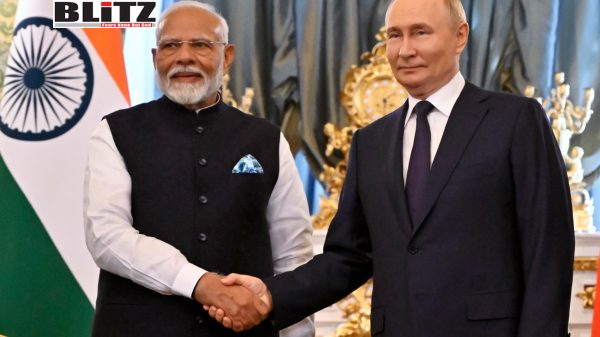Could a third world war really be fought virtually?
- Update Time : Sunday, March 24, 2024

As global tensions mount and geopolitical hotspots simmer, the prospect of a third world war looms ominously on the horizon. Yet, in an age dominated by cutting-edge technology and advanced weaponry, the nature of warfare has undergone a profound evolution, prompting speculation about the possibility of a virtual conflict.
The notion of a virtual war, where drones, humanoids, and artificial intelligence square off in a high-tech showdown, while civilians remain sheltered from harm, has captured the public imagination. However, recent events on the ground in Ukraine and beyond paint a starkly different picture, one that challenges such utopian fantasies.
While advancements in defense technology, from humanoid robots to quantum computing, have fueled speculation about the nature of future warfare, the harsh reality is that war remains a brutal and deadly affair. The ongoing conflict in Ukraine serves as a stark reminder that, despite the allure of futuristic weaponry, the fundamental nature of war has not changed.
The discreet yet persistent efforts of Western leaders to bolster their military-industrial capacity underscore the enduring significance of conventional warfare. Despite the proliferation of drones and cyberattacks, the production of artillery munitions and the deployment of troops remain critical components of modern warfare.
Moreover, the asymmetric distribution of critical and emerging technologies between global powers, notably China and the United States, highlights the evolving dynamics of technological competition. As China surges ahead in key fields such as defense and space, Western nations face mounting challenges in maintaining their competitive edge.
Drawing parallels with the tumultuous events of the past, particularly the lead-up to World War II, the contemporary geopolitical landscape appears eerily familiar. Conflicts erupt unpredictably, driven by a potent mix of ideology, brute force, and technological prowess, reminiscent of the turmoil that preceded previous global conflicts.
Yet, while technology has undoubtedly reshaped the battlefield, its impact on the outcome of war remains uncertain. Historically, innovations such as mechanized warfare and air superiority have reshaped the course of conflict, but they have also exacted a heavy toll on soldiers and civilians alike.
In the context of modern warfare, where drones and artificial intelligence dominate the discourse, the reality is far grimmer. The conflict in Ukraine offers a sobering glimpse into the future of warfare, where high-tech weaponry clashes in a deadly dance of destruction, reminiscent of the trenches of World War I and II.
As drones and robots become increasingly prevalent on the battlefield, the notion that war can be waged remotely, with minimal human cost, is nothing short of delusional. In reality, war remains a brutal and unforgiving endeavor, where lives are lost, and nations are torn apart by the ravages of conflict.
In the face of these sobering realities, the specter of virtual warfare may be nothing more than a mirage, obscuring the true nature of modern conflict. As tensions escalate and geopolitical rivalries intensify, the prospect of a third world war looms large, casting a long shadow over an uncertain future.
















